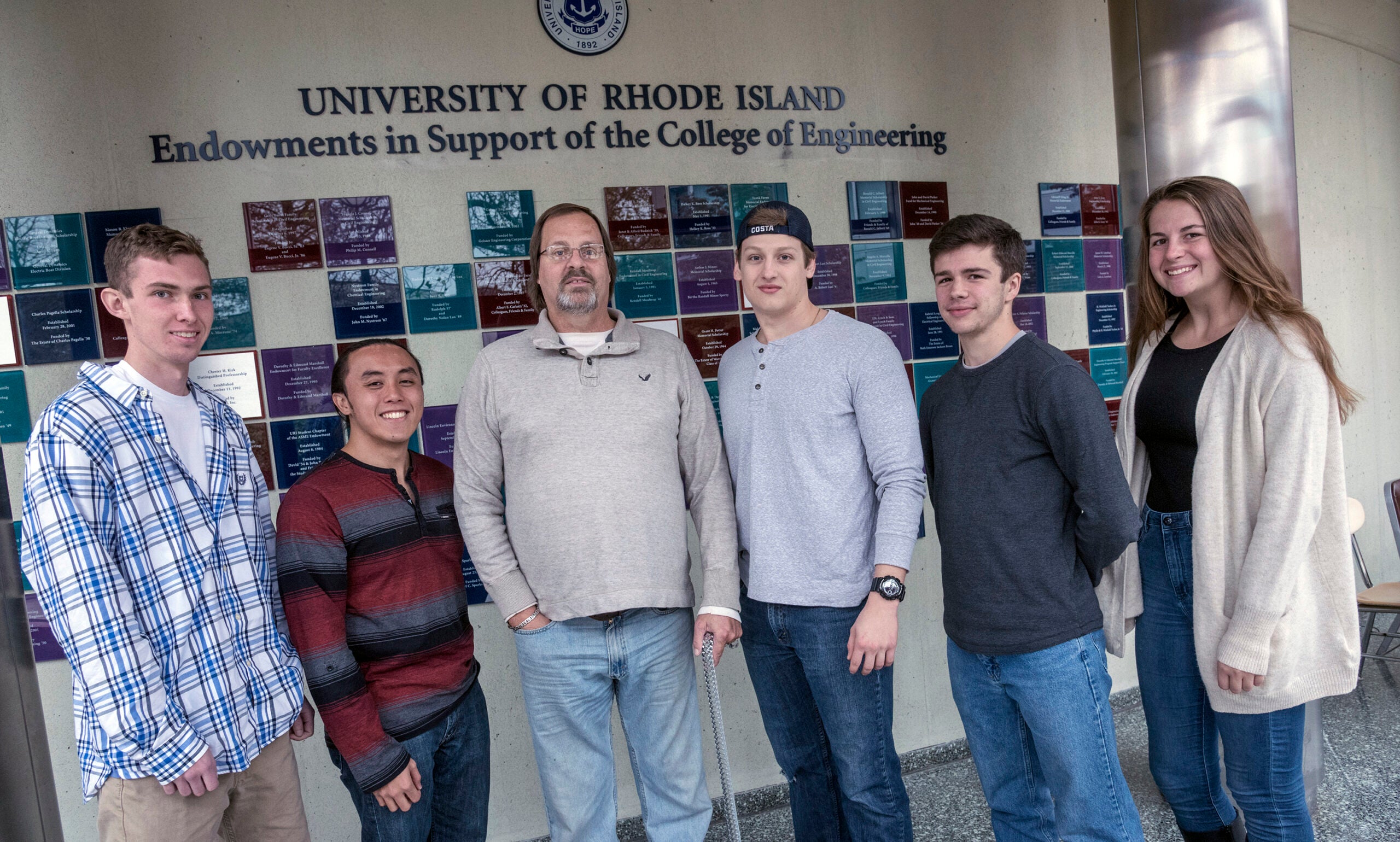KINGSTON, R.I., Oct. 31, 2016—Technology is here to stay, and so is the sedentary lifestyle that comes with it: We push buttons to watch a movie instead of stroll to the local theater.
It is no surprise then that entrepreneurs are creating objects and devices that force us to stand, like pull-up desks, elliptical machines and paddleboards. Now the University of Rhode Island’s College of Engineering is joining the trend.
URI engineering students are teaming up with a Coventry businessman to create a three-wheeled electric vehicle that allows the driver to stand while operating it.
Ken Howes, a former marketing executive and mortgage broker, says he and the students hope to have a prototype of the vehicle—called Strike 3000—by April 2017.
“This is going to be the new wave of transportation,’’ says Howes. “We’re not replacing the car. We’re building a vehicle that provides a quick and easy way to get around—running errands, going to the grocery store, enjoying an afternoon spin.’’
The project is close to Howes’ heart. He has chronic liver disease and is expected to live two more years. His children—Lanie Howes, a URI junior studying animal science, and Kritrina Naylor, a nurse—are also involved in the project.
Howes says he decided to team up with URI after an “upbeat and inspiring’’ meeting with Bahram Nassersharif, distinguished University professor and director of the senior mechanical engineering capstone design projects. Nassersharif thought the vehicle would be a challenging and innovative project for his students.
He was right.
“We’re getting the opportunity to be creative and artistic and do something unique,’’ says Joseph DiPalma, 21, of Hopkinton, who is enrolled in the five-year International Engineering Program, with a focus on mechanical engineering and German. “For a student, that’s thrilling.’’
Matthew Qualben, 22, of Madison, N.J., also studying mechanical engineering, says he’s excited to work on a project that will inspire people to live healthy lifestyles—and will change the future of transportation.
“I’m grateful to URI for giving me the opportunity to get hands-on experience building something,’’ he says. “Our engineering college is preparing us for the real world. I don’t think there’s much more a student could ask for.’’
Howes came up with the idea for the vehicle several years ago after he retired from his marketing job. “I was trying to think of something fun,’’ he says. “I actually thought of a version of it when I was young: The kid standing up on his bicycle, cruising down the hill, with the wind blowing.”
His idea took on greater importance after he read a news article about the negative health effects of sitting too long, including in cars. Standing more each day, says Howes, improves posture, tones muscles, burns calories and increases blood flow. People with everything from diabetes to heart disease benefit from standing, he says.
The $8,000 vehicle will have two wheels in front and one in back. Six feet tall, 4 feet wide and 7 feet long, the vehicle will have an electric motor that can generate enough power to travel 70 miles per hour.
The body will be reinforced with steel to ensure safety in case of an accident. The tinted dome-like roof will be removable so drivers can experience the “wind blowing through their hair while they’re standing up enjoying the open road,’’ says Howes.
The vehicle will also include traditional car features, everything from a stereo to GPS. Leather padding on the interior will make the ride more comfortable, and storage for groceries and other things will be available in front and back.
The engineering students—who also include Alexander Richardson, of Barrington, and Jeric Rodriguez, of North Kingstown—expect to meet next month with officials from the Rhode Island Department of Transportation to make sure the vehicle meets state and federal safety regulations.
“Three-wheeled vehicles have been on the road for a long time,’’ says Howes. “What makes our vehicle unique is that the driver gets to stand. This is what we need to discuss with DOT.’’
The vehicle is perfect for urban dwellers, says Qualben. It’s easy to park, inexpensive to maintain and suitable for people with a short commute to work.
“I can’t wait until the prototype is completed,’’ says Qualben, the team’s leader. “It’s fulfilling to think that we’re at the forefront of the future of transportation, not only in Rhode Island but the world.’’
Howes is grateful for the College of Engineering’s support: “If it wasn’t for them, I wouldn’t be able to see my dream come true.’’ He has more proposals that he hopes to share, once Strike 3000 is finished.
“I have this hot dog bun idea,’’ he says. “It has a lot of potential.’’
On Nov. 8, voters in Rhode Island will be asked to approve Question 4 on the ballot. If passed, the investment will pave the way to attract businesses and create the high-paying, high-skilled jobs Rhode Island needs by authorizing $45.5 million in bonds to expand URI’s highly successful College of Engineering ($25.5 million) and create a URI-affiliated innovation campus program ($20 million) that will pair cutting edge research with private sector investments to create the jobs of the future.

